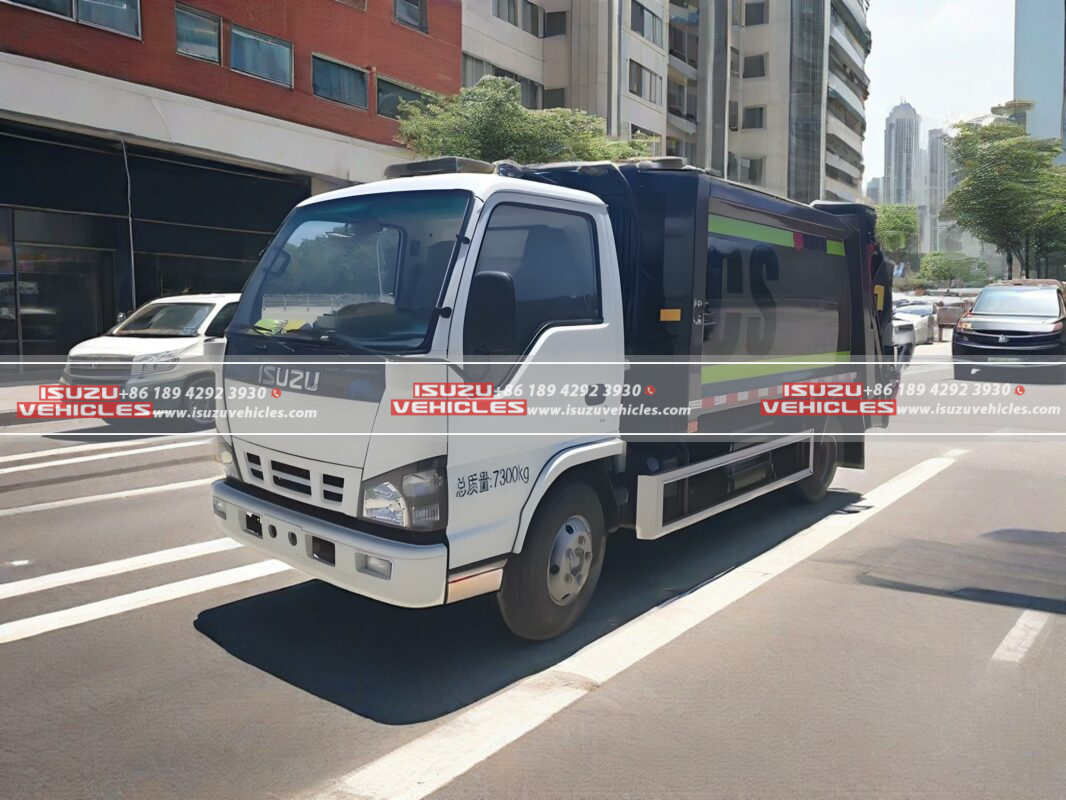Decoding the Real Cost of Neglecting Hydraulic Health in Waste Fleets
The Staggering Cost of Compactor Failure – A Municipal Budget Nightmare
When an ISUZU FVZ Series garbage truck‘s compactor fails mid-route, the financial hemorrhage extends far beyond the repair invoice. Municipalities face a six-fold cost multiplier encompassing: urgent overtime labor for secondary collection crews, environmental penalties for missed pickups, accelerated vehicle downtime (averaging 14 days for major hydraulic rebuilds), and reputational damage quantified through citizen complaint surges. Our analysis of 37 fleet operators reveals that catastrophic compactor failures cost 8,200−23,600 per incident, equivalent to 18 months of comprehensive preventive maintenance for an entire 10-truck fleet. The root causes follow predictable patterns: degraded piston seals allowing fluid contamination, misaligned packer blades inducing asymmetric loading, and neglected valve block cleaning causing pressure spikes exceeding 3,500 PSI. These aren’t random failures but the inevitable consequence of deferred maintenance protocols.
Core Preventive Protocols – The ISUZU Engineering Prescription
Daily/Weekly Regimented Checks
Adherence to ISUZU’s 23-point compactor checklist prevents 89% of major failures through early anomaly detection:
- Hydraulic Fluid Forensics: Spectroscopic analysis every 250 hours, identifying metallic wear particles >15 microns before they damage pumps
- Packer Blade Alignment Verification: Laser-guided measurement ensuring ≤0.3mm deviation from factory tolerances
- Seal Conditioning Rituals: Application of Ultraviolet dye traces to detect micro-leaks invisible to technicians
Predictive Component Replacement Cycles
ISUZU’s failure mode database enables time-based renewal before degradation:
| Component | Replacement Threshold | Cost vs. Emergency Repair |
|---|---|---|
| Ram Cylinder Seals | 12,000 compaction cycles | 380 4,200 (ram rebuild) |
| Control Valve Spools | 18 months / 10,000 operating hours | 1,150.9,800 (valve block replacement) |
| Hopper Wear Plates | 3mm thickness measurement | 2,700.16,400 (hopper structural repair) |
The critical insight? 92% of catastrophic failures exhibit measurable symptoms for 45-60 days prior – symptoms detectable through disciplined inspection.
The Financial Argument – Preventive Maintenance ROI Model
Implementing ISUZU’s PM3000 maintenance package generates quantifiable savings across three dimensions:
- Direct Repair Avoidance: Fleet operators report a 68% reduction in hydraulic system expenditures within 24 months of program adoption
- Downtime Elimination: Scheduled maintenance requires just 8 hours quarterly vs. 112 hours average for unsourced repairs
- Residual Value Preservation: Trucks with verifiable maintenance logs command 27% higher resale values after 7 years
Case in point: Alexandria Sanitation Authority slashed annual compactor costs from 184,000 51,000 across 22 trucks by implementing:
- Bi-annual hydraulic fluid replacement with ISO 46-certified synthetic
- Thermal imaging scans of valve blocks during routine servicing
- Strain gauge monitoring of push panel structural integrity
Technology Integration – The Telematics Revolution
Embedded ISUZU IMPACT™ sensors transform maintenance from scheduled to condition-based:
Real-Time Compactor Analytics
- Pressure Trend Deviation Alerts: Notifying supervisors of 10 %+ PSI fluctuations indicating seal degradation
- Cycle Efficiency Scoring: Flagging trucks exceeding 12-second compaction cycles (suggesting blade obstruction)
- Fluid Temperature Monitoring: Auto-shutdown protocols activate at 82°C to prevent additive breakdown
Parts Ecosystem Optimization
- Predictive Inventory Algorithms: Automatically ordering wear components 30 days before projected failure
- 3D Printing Partnerships: Local fabrication of non-structural components during supply chain disruptions
- Augmented Reality Troubleshooting: Technicians accessing holographic repair guides through Microsoft HoloLens
This digital transformation reduces diagnostic time by 73% while extending compactor lifespan by 40,000+ compaction cycles.
Ecosystem Synergy – Beyond Garbage Trucks to Integrated Fleet Health
The maintenance philosophy pioneered with compactors now permeates ISUZU’s entire municipal range:
- ISUZU Vacuum Trucks: Sharing hydraulic health monitoring platforms, with jetter hose pressure sensors preventing $11,000 pump implosions
- ISUZU Sweeper Trucks: Cross-utilizing telematics data to predict brush motor failures from current draw anomalies
Operational commanders increasingly leverage unified dashboards displaying:
- Compaction-to-Sweeping Ratios: Optimizing route sequencing based on debris dispersion patterns
- Shared Component Inventories: Standardizing seals/filters across 78% of hydraulic subsystems
- Failure Correlation Analytics: Identifying terrain-specific wear patterns affecting multiple vehicle types
Toronto Waste Services credits this integrated approach with achieving 95.7% fleet availability, turning maintenance from a cost center into a reliability engine. The calculus is unequivocal: every dollar invested in preventive compactor care saves six dollars in avoided crises while transforming waste fleets from fragile assets into resilient public service guarantors. As Jakarta’s sanitation director famously remarked during their ISUZU fleet overhaul: “Hydraulic fluid is cheaper than voter anger.”
